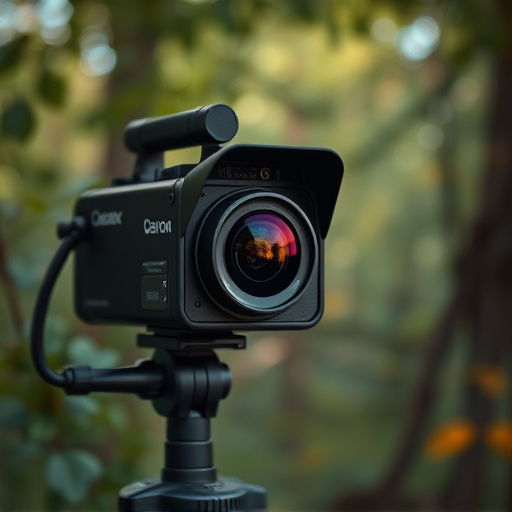In an era of advanced technology, tiny and sophisticated covert cameras disguised as everyday items pose a significant threat to privacy in home offices. These devices transmit video signals via radio frequency (RF) waves. Detecting RF signals is crucial for identifying hidden cameras, requiring specialized equipment like RF detectors and thermal imaging cameras. Balancing legal considerations with safety precautions is essential; local laws regarding surveillance without consent must be respected. Only trained professionals should use such tools to avoid false alarms and health risks. Implementing these measures helps create a secure home office environment while addressing the growing concern of covert cameras.
Uncover the insidious world of hidden cameras with our comprehensive guide on detecting RF (radio frequency) signals. From understanding the latest covert camera technology to identifying suspicious RF emissions, this article equips you with essential tools and techniques. Learn how to protect your home or office from unwanted surveillance, exploring legal boundaries and safety precautions along the way. Discover the steps needed to navigate this modern-day enigma and secure your privacy.
- Understanding Covert Camera Technology
- Identifying Radio Frequency Signals
- Detecting Hidden Cameras: Tools and Techniques
- Legal Considerations and Safety Precautions
Understanding Covert Camera Technology
Hidden cameras, often referred to as covert cameras, have evolved significantly in recent years, becoming smaller, more sophisticated, and capable of operating at various frequencies. In the context of a home office or any workspace, understanding this technology is paramount for maintaining privacy. Covert cameras can be concealed in everyday objects like clocks, pens, or even light bulbs, making them virtually undetectable to the naked eye. They transmit video signals via radio frequency (RF) waves, allowing remote viewing and recording.
These devices operate on different frequencies, from low-tech analog signals to more advanced digital transmissions. Detecting such cameras requires knowledge of these frequencies and the equipment used to scan for them. With the right tools, one can identify suspicious RF activity that might indicate the presence of covert cameras, ensuring a safer and more secure home or office environment.
Identifying Radio Frequency Signals
Identifying radio frequency (RF) signals is a crucial step in detecting hidden cameras, especially those used in covert operations within a home office environment. RF signals are invisible to the naked eye but can be detected and analyzed using specialized equipment. These signals are emitted by various devices, including security cameras, remote controls, and wireless sensors. By scanning for unique frequency patterns, you can uncover hidden cameras that might be disguised as everyday objects like clocks or smoke detectors.
In a home office setting, it’s essential to understand the RF landscape of your space. Many modern devices operate on specific frequencies, leaving distinct signatures. With the right tools and knowledge, you can differentiate between legitimate signals from everyday electronics and suspicious activity from covert cameras. This process involves learning to recognize the unique RF footprint of different technologies, allowing you to detect potential security breaches effectively.
Detecting Hidden Cameras: Tools and Techniques
Detecting hidden cameras, especially covert cameras designed for home offices, requires a combination of specialized tools and techniques. One effective method involves using RF (radio frequency) detectors, which can identify signals emitted by active devices. These handheld gadgets scan through various frequencies to pinpoint any electronic transmissions, potentially uncovering hidden cameras that operate wirelessly.
Additionally, thermal imaging cameras play a crucial role in detecting heat signatures left by cameras’ components. This technology is particularly useful for identifying devices with minimal power consumption or those strategically placed to avoid detection. By analyzing temperature variations, individuals can uncover covert cameras disguised in plain sight, ensuring a safer and more secure home office environment.
Legal Considerations and Safety Precautions
When detecting hidden cameras, especially in sensitive areas like a home office or any private space, it’s crucial to understand legal boundaries and prioritize safety precautions. In many jurisdictions, installing devices to monitor such spaces without explicit consent can be illegal, infringing on privacy rights. Therefore, anyone engaging in this practice must ensure they have the necessary permissions from all parties involved.
Safety is paramount; using tools to detect radio frequency emissions from covert cameras should only be done by individuals with the appropriate training or under professional supervision. Misuse of such equipment could lead to false positives, causing unnecessary alarm, or even pose potential health risks associated with radiation exposure if not handled correctly. Always prioritize ethical and safe practices when dealing with issues related to hidden cameras in any environment.
In today’s digital age, understanding how to detect hidden cameras using radio frequency (RF) technology is a valuable skill for maintaining privacy in both personal and professional spaces, like home offices. By familiarizing ourselves with covert camera technology and employing tools designed to identify RF signals, we can actively protect our privacy and security. It’s crucial to balance these measures with legal considerations and safety precautions, ensuring we respect privacy rights while safeguarding sensitive information. With the right knowledge and resources, detecting hidden cameras becomes an accessible step towards a safer digital environment.
